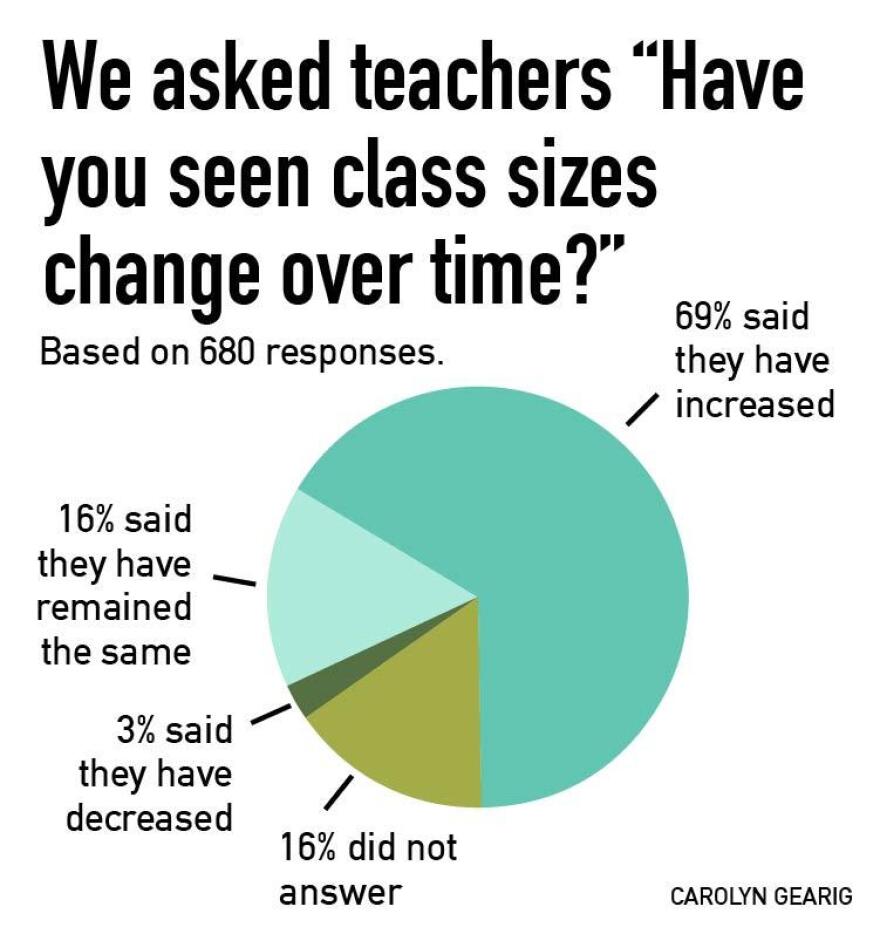Pinning down the average class size in Michigan's public schools is not an easy thing to do.
For example, the Michigan Department of Education reports a student/teacher ratio of 23 to 1. But the way that number is calculated isn't necessarily a good reflection on how many kids are in the class.
For a story on class sizes in Michigan, Walled Lake Consolidated Schools Superintendent Ken Gutman told us that these calculations include faculty that aren't full-time teachers like school psychologists and reading resource teachers.
"Student teacher ratios make districts look better,” said Gutman. “Really, I mean, when you add our support staff, our psychologists, our social workers, our ancillary staff, our counselors … add those into the ratio, it really denies the fact that there are 36 students in the class."
So how can we find out what the typical classroom size is in Michigan?
Last December, we decided to ask teachers themselves. And the majority of them told us their class sizes are growing in Michigan.
The information comes from a survey we sent to school teachers asking them to report the number of students in their class.
Based on 680 responses, Michigan Radio's Mark Brush and Jennifer Guerra reported the average class size contains 27 students. Additionally, 69% of surveyed teachers said they noticed class size increasing with only 3% saying class size decreased.
Large class sizes can prove problematic for students.
Michigan Radio's Jennifer Guerra spoke with Diane Whitmore Schanzenbach at Northwestern University. She says small classes help students. They're particularly helpful through grade 3, and large class sizes can harm students as they get older.
"Kids who were randomly assigned to the small classes were more likely to go on to attend college," explains Schanzenbach. "They’re less likely to be involved in crime, they’re less likely to be a teenage parent, they’re more likely to save for retirement." And the positive outcomes are most pronounced in African American children and kids from low-income families.
Michigan is one of 15 states without laws limiting class size.
Below is what teachers we surveyed think about large class size.
"It greatly affects writing and reading. It takes me forever to meet with students individually for writing and reading conferences. I should be meeting with each student at least once a week and that is impossible with 31 students. That is not okay." - Teacher from the Hopkins Public School District
"As lower grades (K-3) get larger, I have more children coming to me in fourth grade without basic math facts, more difficulty with reading and more behavior problems." - Teacher from the Hart Public School District
I was lucky to have a class of 21 one year and the dynamic was completely different. With 30 kids there is no room, they are harder to manage. There aren't enough materials for all. It is next to impossible to be creative due to lack of space and materials. - Teacher from the Swartz Creek Community School District
"It's exhausting and limiting." - Teacher from the Detroit Public School District





